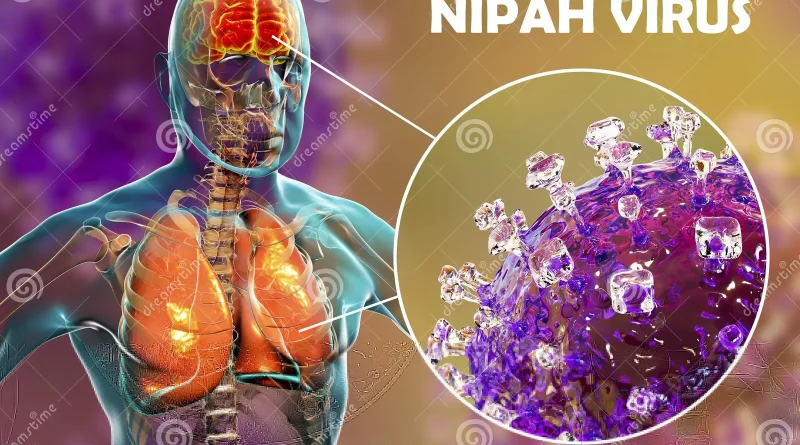the Nipa virus
Understanding Nipah Virus: Origin, Symptoms, Prevention, and Treatment
Introduction:
In recent years, the rise of emerging infectious diseases has sparked widespread global concern. Among these diseases, the Nipah virus has notably drawn the scientific community’s focus. Initially recognized in 1999 amid an outbreak in Malaysia, this virus has triggered numerous incidents across South and Southeast Asia.
The purpose of this blog post is to shed light on the Nipah virus, delving into its origins, symptoms, prevention, and treatment methods.
1. Origins and Transmission:
Nipah virus (NiV) is a zoonotic virus, which means it’s miles transmitted from animals to humans. Fruit bats of the Pteropodidae family are the natural hosts of the virus. NiV can be transmitted to humans through direct contact with infected bats, contaminated fruits, or through close contact with infected pigs or people.
2. Symptoms:
Nipah virus infection can range from asymptomatic (no symptoms) to severe acute respiratory syndrome and fatal encephalitis. The incubation period is usually 4 to 14 days after exposure. Common symptoms include fever, headache, drowsiness, respiratory illness, disorientation, and mental confusion. In severe cases, the infection can lead to a coma within 24-48 hours.
3. Prevention:
Preventing Nipah virus infection involves several strategies:
- Avoiding Direct Contact: People in endemic regions are advised to avoid contact with bats and pigs, both of which can harbor the virus.
- Proper Hygiene: Regular hand washing with soap and water can help prevent the spread of the virus.
- Avoiding Contaminated Food: Thoroughly wash and peel fruits and vegetables before consumption, and avoid raw palm sap as bats can contaminate it.
- Isolation and Quarantine: Patients infected with the Nipah virus should be isolated to prevent the spread of the disease. Close contacts and healthcare workers should wear protective gear.
4. Treatment:
There is no specific antiviral treatment for Nipah virus infection. Supportive care, including intensive supportive therapy to control fever, and respiratory and neurological symptoms, is crucial. Researchers have experimentally used ribavirin, an antiviral medication, to treat some patients, but its effectiveness remains inconclusive.
5. Recent Outbreaks and Research:
Researchers are actively studying the genetic makeup and transmission patterns of the Nipah virus in Bangladesh, India, Malaysia, and Singapore. They are also working on developing effective treatments and vaccines to prevent future outbreaks and reduce the virus’s impact on public health. The development of a vaccine represents a significant step in these efforts.
Conclusion:
The Nipah virus remains a significant concern in the realm of infectious diseases. With its high mortality rate and potential for human-to-human transmission, understanding the virus, its origins, symptoms, and prevention methods is crucial. Ongoing research and international collaboration are essential in developing effective treatments and preventive measures to curb the spread of this deadly virus and protect global public health.
Stay informed, follow recommended guidelines, and support ongoing research efforts to combat emerging infectious diseases like the Nipah virus.




